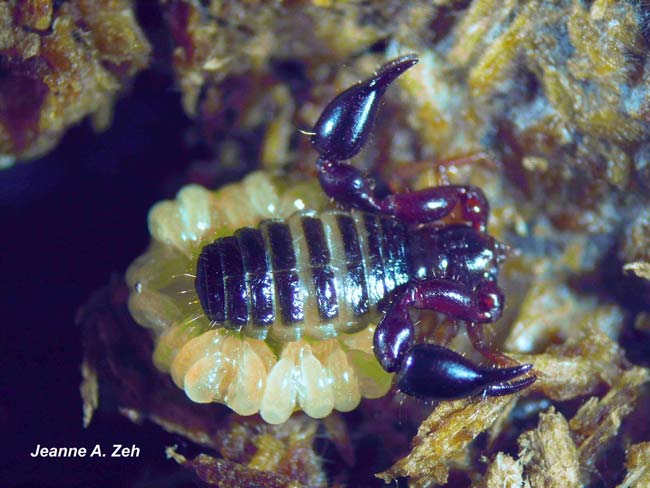That's Why the Lady Pseudoscorpion is a Tramp

Promiscuity is not a trait most people regard in high esteem, but for some animals it may be the key to increased reproductive success.
In much of the animal world, sleeping around increases the likelihood of healthy offspring and reduces the chance of spontaneous abortion of an entire brood.
Also, evidence suggests that in a womb filled with half-brothers and half-sisters, offspring sired by multiple strangers may help those fathered by their mother's brother make it out alive.
Since all these developmental processes go on at the cellular level inside the female reproductive tract of live-bearing species, these effects have proven difficult to monitor.
So researchers studied the promiscuous habits of pseudoscorpions, which are small venomless arachnids that look like scorpions with no tails and carry their developing young in external wombs on their backs—a convenient setup for scientists.
Females that mate with multiple, unrelated males at one time produce more, and healthier, offspring, the study found.
The dating game
Sign up for the Live Science daily newsletter now
Get the world’s most fascinating discoveries delivered straight to your inbox.
Jeanne and David Zeh of the University of Nevada, Reno created mixed sibling wombs by mating female pseudoscorpions with different pairs of males in short succession.
Females mating with a two of their brothers suffered the highest miscarriage rate, nearly 40 percent. Mating with a brother and an unrelated male, or the same non-brother twice, both produced abortion rates around 20 percent.
Pairings considered promiscuous, with two non-brother males, resulted in a miscarriage rate less than 10 percent.
Dual non-brother pairings also resulted in a higher number of viable offspring per brood—about 65—compared to about 50 for brother/non-brother pairings and just 40 for pairings with two brothers.
Biology seems to have a thing against inbreeding.
Besides being gross from a human perspective, inbreeding increases the risk of inheriting identical copies of genes detrimental to the health of the offspring. For example, rampant inbreeding in some European royal families resulted in a high rate of hemophilia in later generations.
Additionally, genetic similarity of embryos to their mother can set off immune system reactions that damage developing offspring. And inbred offspring generally don't receive proper nutrition from their mother while in the womb. These complications play an important role in triggering spontaneous abortion.
Siblings to the rescue
The greater success of brother/non-brother pairings compared to brother/brother couplings suggests that out-bred offspring (those sired by fathers not related to the mother) somehow rescue their inbred half-siblings while both sets are still in the womb.
The mechanism for this remains unknown, but scientists think it happens one of two ways.
"By their more vigorous activity, out-bred embryos might draw sufficient nutrients into the communal brood sac to ensure development of the brood to birth," Jeanne Zeh told LiveScience.
Alternatively, by establishing a non-related presence in brother/non-brother-produced broods, the normal embryo/mother interactions set up by healthy, out-bred offspring might compensate for the failed interactions between the mother and inbred siblings.
This research was detailed in the Jan. 12 issue of the journal Nature.










